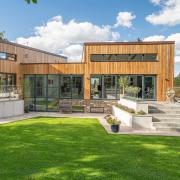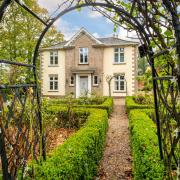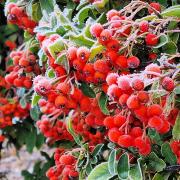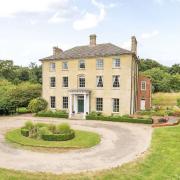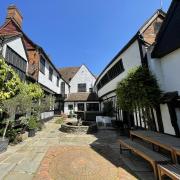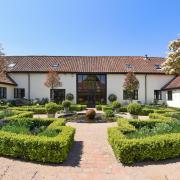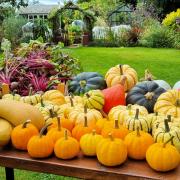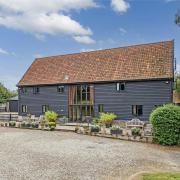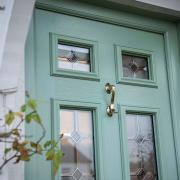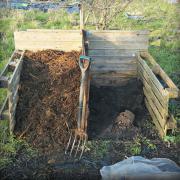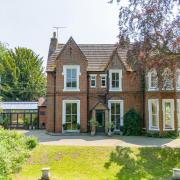Nancy Main's studio is the kind of place you want to explore all afternoon. ‘This has always been a place where things are made,’ she says, reflecting on the origins of the large bright space, once a draper’s shop.
There are books, plants, tools of every description, glazes with names like First Light and Peacock Green in old ice-cream tubs, shelves stacked with Nancy’s distinctive sculptures at various stages of completion, and floor-to-ceiling windows where she displays pieces from her latest project. But more about this in a moment.
Nancy discovered pottery in her 20s while working as a primary school teacher in Bristol. ‘A friend of mine said she was going to sign up for an evening class and I said, oh, I’d love to try that.’ There were no artists or potters in the family to act as a guide or early inspiration, but whereas most people tend to find pottery an awkward and elusive process – at least to begin with – for Nancy it was the opposite.
‘I always felt a sense of frustration at having something in my mind but never quite being able to express it, until I started pottery and I realised, oh, this is what I mean’. Following this introduction, Nancy decided to spend six months at the Nelson Community Pottery in New Zealand. Drawn to the work of Maria Martinez and the Pueblo potters, she began to explore alternative firing techniques, a preference still characteristic of her work.
‘I have tried – and I’m sure I’ll try again in the future – to do more surface decoration, but it’s just not what ceramics are about for me.’ Instead, Nancy’s ceramics are much more about form, which she can trace back to New Zealand, where she found herself responding to strange features in the landscape, such as the Moeraki Boulders on South Island, but perhaps even further back to her Scottish heritage and childhood holidays on the ancient Aberdeenshire coast.

Returning to the UK, Nancy moved to another stretch of coast, St Ives in Cornwall, partly because of the artistic community there, but also because, in Nancy’s own words: ‘I wanted to be able to walk out of my front door into a wild landscape.’ She had already fallen in love with the creative atmosphere of St Ives and, from an early age, she found herself drawn to Barbara Hepworth, who helped make St Ives a must-see destination for art lovers around the world.
It sounds like a cliché, but I really felt at home in her studio.' Nancy deliberately avoids any trace of cliché in her work. ‘There are times when I want to see what happens if I make a hole in a particular piece of work, but I tell myself I can’t do that, because that’s what [Hepworth] used to do.’
Some artists embrace a sense of artistic tradition and inheritance, but originality really matters to Nancy, both as artist and teacher. ‘There comes a point when you’ve got to stop watching all the YouTube videos, and stop looking at all the Instagram posts, and start listening to yourself instead.’
Nancy and her husband, Jason, moved to Suffolk in 2006 with their two young children and a third soon to arrive. Given the importance of landscape as a source of inspiration, I ask if she came here because of the Suffolk coast. She shakes her head. ‘I didn’t know Suffolk at all,’ she reveals. The real reason, she explains, is because they wanted to start a restaurant and found a space in Yoxford, a fish and chip shop at the time.
‘We were completely naive,’ she admits. ‘We had to move in one day and start serving fish and chips the next – and that was before we realised everyone goes to Aldeburgh for their fish and chips!’ So, after nine months, the pair launched Mains Restaurant, a local favourite which they ran until 2021, during which time Nancy baked bread and croissants first thing on a Saturday and – in the early days, at least – taught pottery from a small shed in the garden.

It was only after lockdown, an exhausting period when, like many restaurant owners, Nancy and Jason provided take-aways and deliveries, that they decided to create a dedicated pottery studio where Nancy now runs a series of much-loved classes under the name Yoxford Makers.
Since moving here, the Suffolk coast has played an important part in Nancy’s work, particularly her latest projects, Drift and Morimaru. Both are recognisably Nancy’s because of the focus on beautiful curved forms, rather than surface decoration.
When I ask Nancy what’s distinctive about her ceramics, she returns to the idea of form, and curved forms above all. ‘When I look back at doodles I’ve done, or photographs of work from over 20 years ago, there are always the same curved lines. I can try to branch off and do something different, but I always come back to the same place.’
This idea of form refers to the shape of a particular piece, but also the texture of ceramic and the contrast between light and shade. During the course of our conversation, some of Nancy’s sculptures even seem to bend and flex as the light changes outside.
Nancy explains how the form emerges through an extremely intuitive process stretching out over a period of weeks, if not months, like a dialogue which she hopes will continue long after these sculptures leave her studio and start to interact with the lives of other people and places.

Nancy’s latest project, Morimaru, meaning ‘dead sea’, takes inspiration from the Celtic name for the North Sea. ‘There are various theories why they called it the dead sea,’ she explains, all of which touch on the transience of human life and the natural landscape. Nancy points to the Storegga Slide, a landslide in Norway (c6200 BC) which caused much of Doggerland to flood, with catastrophic consequences for the Mesolithic people who lived there.
Any regular visitor to Covehithe or Shingle Street will recognise echoes of this catastrophic event in the erosion that characterises much of the Suffolk coast. And there’s Dunwich, the medieval capital of East Anglia, which disappeared in the 1280s.
Nancy describes the sculptures in this collection as ‘suggestive but undefined’, resembling waves, perhaps the coastline – perhaps, also, human figures, in remembrance, she suggests, of the refugees who continue to lose their lives while trying to reach the UK.
But these pieces also ‘engage with internal landscape just as much as external landscapes’, which means Nancy wants to know what ideas and emotions they spark in other people. ‘I don’t want to tell people what to think or feel,’ she insists. Instead, she hopes for an original response to match the originality of her own creative process.
Nancy’s sculptures are available from Yoxford Makers, the Southwold Gallery and Contemporary Applied Arts in Marylebone, London. You can see her work on display at the Old Theatre in Framlingham (May 4-14) and London Craft Week (May 13-19). She will also take part in Art For Cure’s upcoming shows: Journey at Ballroom Arts in Aldeburgh (May 3-9) and Glemham Hall, Woodbridge, in September.





